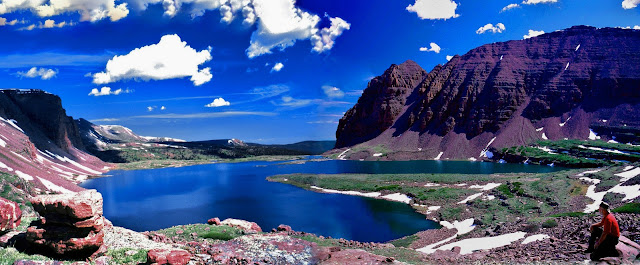Going alone seems to be an issue with some–and it should be. I don’t advise it with anyone, unless they can meet my criteria which I explain in the next few paragraphs. Links to get more detail are highlighted.
In the ARTICLES section of my website I have a category called Survival articles, in which I explain the important precautions I take every time I go on a trip. Check out the 7 experiences and be prepared to LIVE.
Even if you understand all those experiences and the principles involved, I’ll have to admit that it still isn’t a good idea to go alone–but, if you must because of being stubborn, or sort of dense–I guess like me, be aware of the precautions I take, and do the same or better.
Any time I make an important deviation from my schedule I call and advise. On my 27 day expedition I called the family every night at a designated time. At that time in 2003 there didn’t exist yet the SPOT Tracker, mentioned next. Remember you can rent a sat phone and SPOT Tracker from Russ Smith at Skycall Satillite.
NOTE: So you can see what I mean I’ll program the SPOT Tracker now that you can access by clicking on this LINK Note: The link was only good as I describe next for 7 days. For this demonstration it took you to my home in Springville and area with a breadcrumb trail. That is what you saw if you clicked during the first week. What shows now is when I went on the deer hunt and used the SPOT where I camped that night. So you can see what I mean I’ll insert below a photo of my SPOT tracks from my last trip to Jackson Park and Crow Basin. NOTE: In doing this demonstration I found that the SPOT Tracker will work through the glass of your windshield .
The SPOT is also programmed with a Help message to be sent to 4 special friends with special info like health issues, etc. With that message the 4 friends would have to take action, and they would know exactly where I was. Then of course there is the 911 button that triggers Search and Rescue showing them exactly where to go.
The pessimist, or fearful, might say that even having all the emergency gadgets you might be in trouble having a heart attack, slipping and hitting your head on a rock, falling into a ravine or whatever, and not be able to use your SPOT Tracker. Of course all those things, or equivalents, could happen to you every time you leave your home, or even in your home. Having and using a SPOT Tracker every day in the wilderness will at least show where you were yesterday, if not heard from today, and that combined with a trip plan of where you were to head next will make the search relatively easy.
From this season I also had another survival YouTube video that is Video #4: Survival at Swasey Hole that one viewer called “genius.” I’m not sure why……. guess I’ll have to look at it again.
This discussion isn’t over without mentioning Eric Robinson, the 64 year old Australian lost in the Uintas and never found this past season (2011). He had a Personal Locator Beacon but never used it. It obviously worked out being a mistake for him to go alone ( in my opinion, UNPREPARED), so of great importance it’s worth repeating that he apparently didn’t take any of the precautions I take. I use my SPOT tracker several times each day–at least assuring those interested where I was yesterday giving them a good starting point and hopefully avoiding waiting 7 years to get the insurance money!
Just follow the simple rules and have a wonderful time in the great outdoors–and make the wait for those at home relaxing, worry free and fun knowing each day you’re still in the game and you’ll be home soon.
COMMENTS including a bit of CONTROVERSY
From the Salt Lake Tribune article



